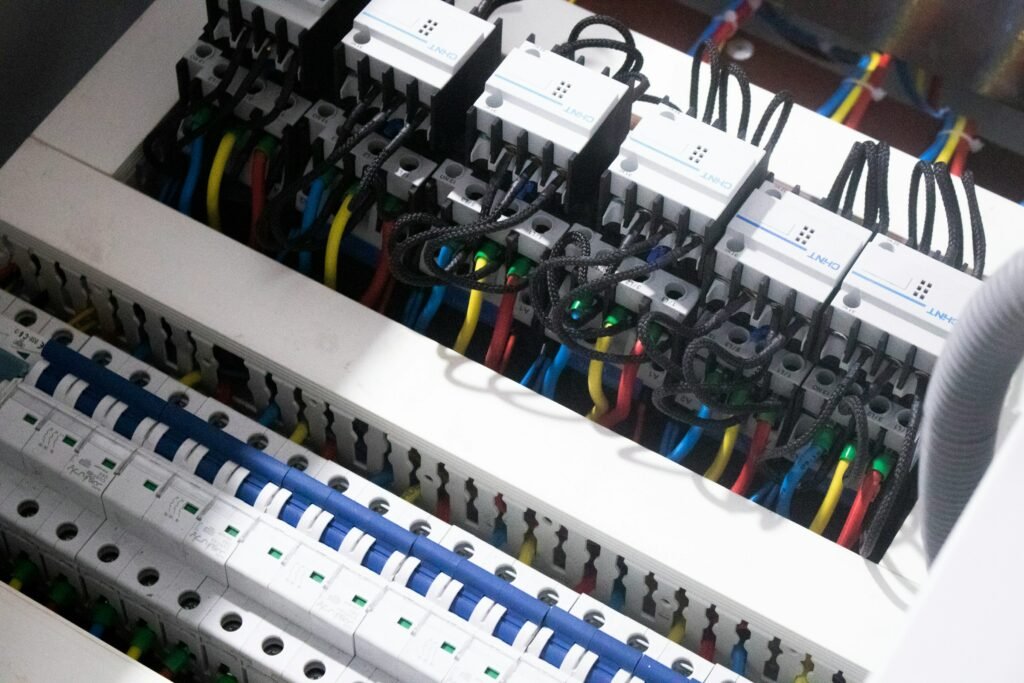Preserving the historical integrity of buildings while ensuring they meet modern safety standards poses a unique challenge, particularly when it comes to electrical wiring maintenance. Historic buildings are treasures of the past, encapsulating the architectural, cultural, and social heritage of their time. Yet, behind their charming facades lies a network of aging electrical systems that require careful attention to ensure both safety and preservation. In this article, we delve into the complexities of conducting electrical wiring maintenance in historic buildings, exploring the challenges, strategies, and considerations involved.

Understanding the Challenges
Historic buildings present a myriad of challenges when it comes to electrical wiring maintenance. Many of these structures were constructed decades or even centuries ago, long before modern electrical standards were established. As a result, they often feature outdated wiring systems that may not meet current safety codes. Additionally, the materials used in these older systems, such as knob and tube wiring or cloth-insulated wires, may have deteriorated over time, increasing the risk of electrical hazards such as shorts, sparks, and fires.
Preservation mandates further complicate the issue. Historic buildings are subject to stringent regulations aimed at protecting their architectural and historical significance. Any modifications, including updates to electrical systems, must be carefully planned and executed to minimize impact on the building’s original fabric and character.
Developing a Preservation-Oriented Approach
Conducting electrical wiring maintenance in historic buildings requires a preservation-oriented approach that balances safety with conservation. Preservation specialists, architects, engineers, and electricians must work collaboratively to develop tailored solutions that address the unique needs of each building while adhering to preservation guidelines.
One of the first steps in this process is conducting a thorough assessment of the building’s electrical system. This includes inspecting wiring, outlets, switches, panels, and any other electrical components to identify potential hazards, deficiencies, and areas in need of repair or upgrade. Advanced diagnostic techniques, such as thermal imaging and electrical testing, can help pinpoint hidden issues without damaging the building’s structure.
Preserving Historic Fabric
Preserving the historic fabric of a building is paramount during electrical wiring maintenance. This involves retaining original features, materials, and finishes whenever possible. For example, rather than replacing entire wiring systems, preservation-minded approaches may involve selectively upgrading components while preserving original wiring routes and fixtures. In some cases, historic materials such as cloth-insulated wires may be carefully restored or replicated to maintain authenticity.
When modifications are necessary, efforts should be made to minimize visual impact and preserve the building’s aesthetic integrity. Concealed wiring techniques, such as running wires behind baseboards, crown moldings, or within existing conduits, can help maintain the building’s historic character while improving safety and functionality.
Compliance with Preservation Standards
Compliance with preservation standards is essential when conducting electrical wiring maintenance in historic buildings. Preservation guidelines, set forth by organizations such as the National Park Service and local historic preservation boards, dictate what types of modifications are permissible and the methods by which they must be carried out.
Before undertaking any work, it is imperative to obtain necessary approvals and permits from relevant authorities. This may involve submitting detailed plans and documentation outlining proposed modifications and demonstrating compliance with preservation standards. Working with experienced preservation professionals familiar with the intricacies of historic preservation regulations can streamline this process and ensure adherence to guidelines.
Implementing Modern Safety Measures
While preserving historic fabric is paramount, ensuring the safety of occupants is equally important. Modern safety measures must be integrated thoughtfully into historic buildings to mitigate the risk of electrical hazards.
This may include upgrading electrical panels, installing ground fault circuit interrupters (GFCIs) in kitchens and bathrooms, and replacing outdated wiring with modern, code-compliant alternatives. Careful consideration must be given to the placement of outlets, switches, and lighting fixtures to ensure they meet functional requirements without detracting from the building’s historic character.
Conducting electrical wiring maintenance in historic buildings requires a delicate balance between preservation and safety. By adopting a preservation-oriented approach, collaborating with preservation specialists, and adhering to preservation standards, it is possible to safeguard these architectural treasures for future generations while ensuring they meet modern electrical safety requirements. With careful planning, meticulous execution, and a commitment to preserving historic fabric, historic buildings can continue to inspire and enrich communities for years to come.